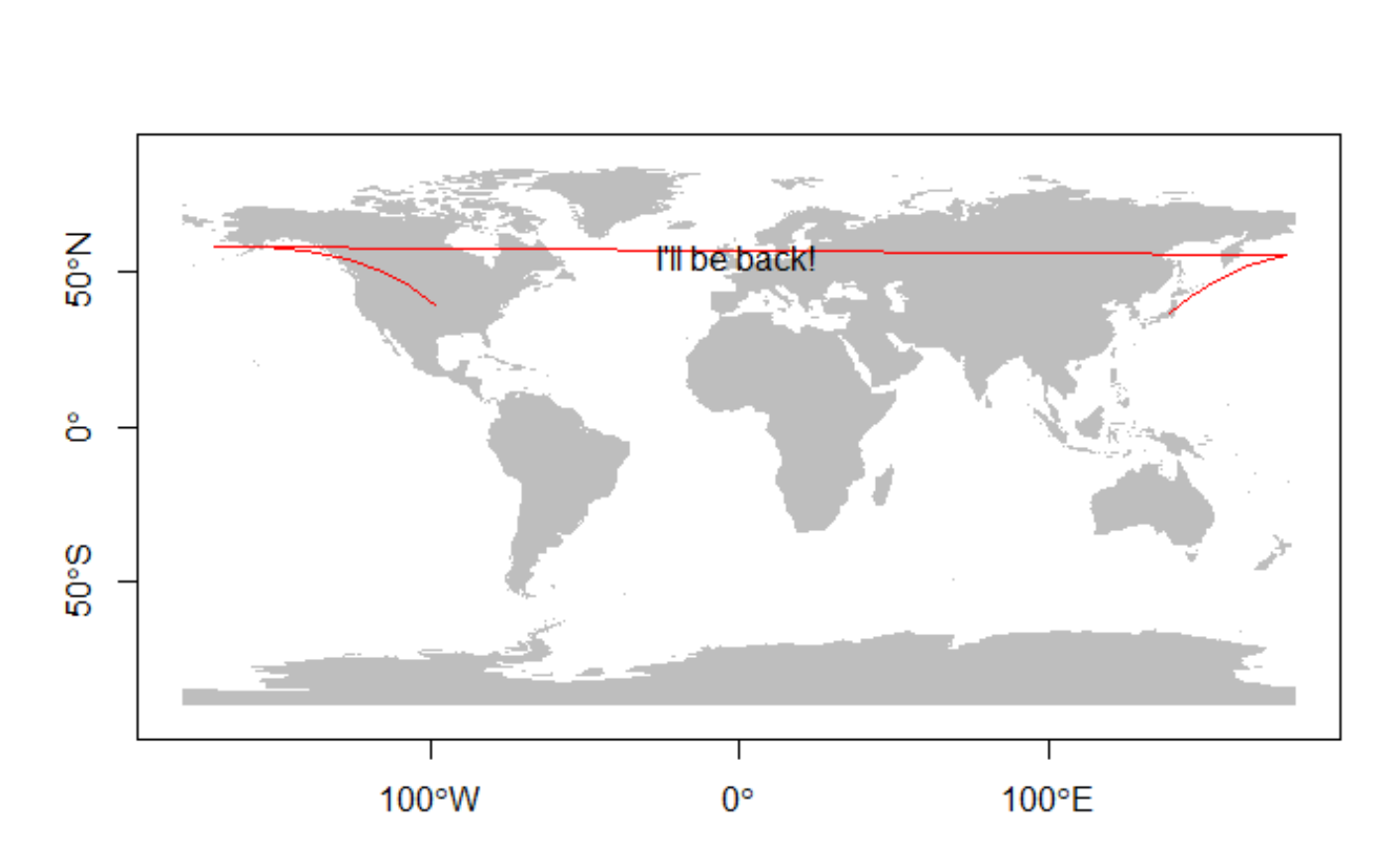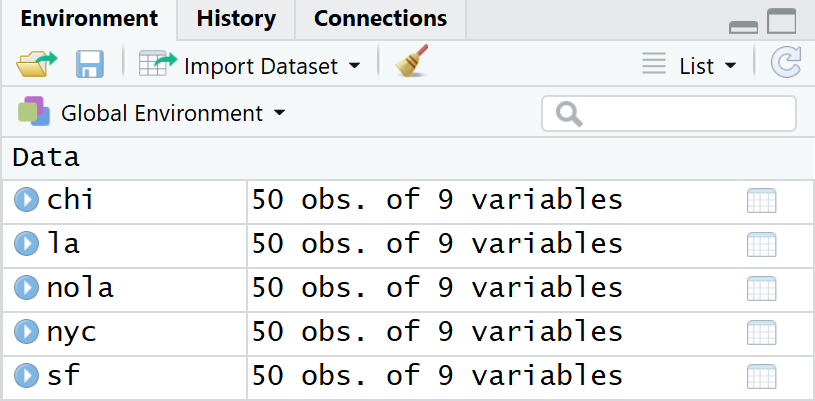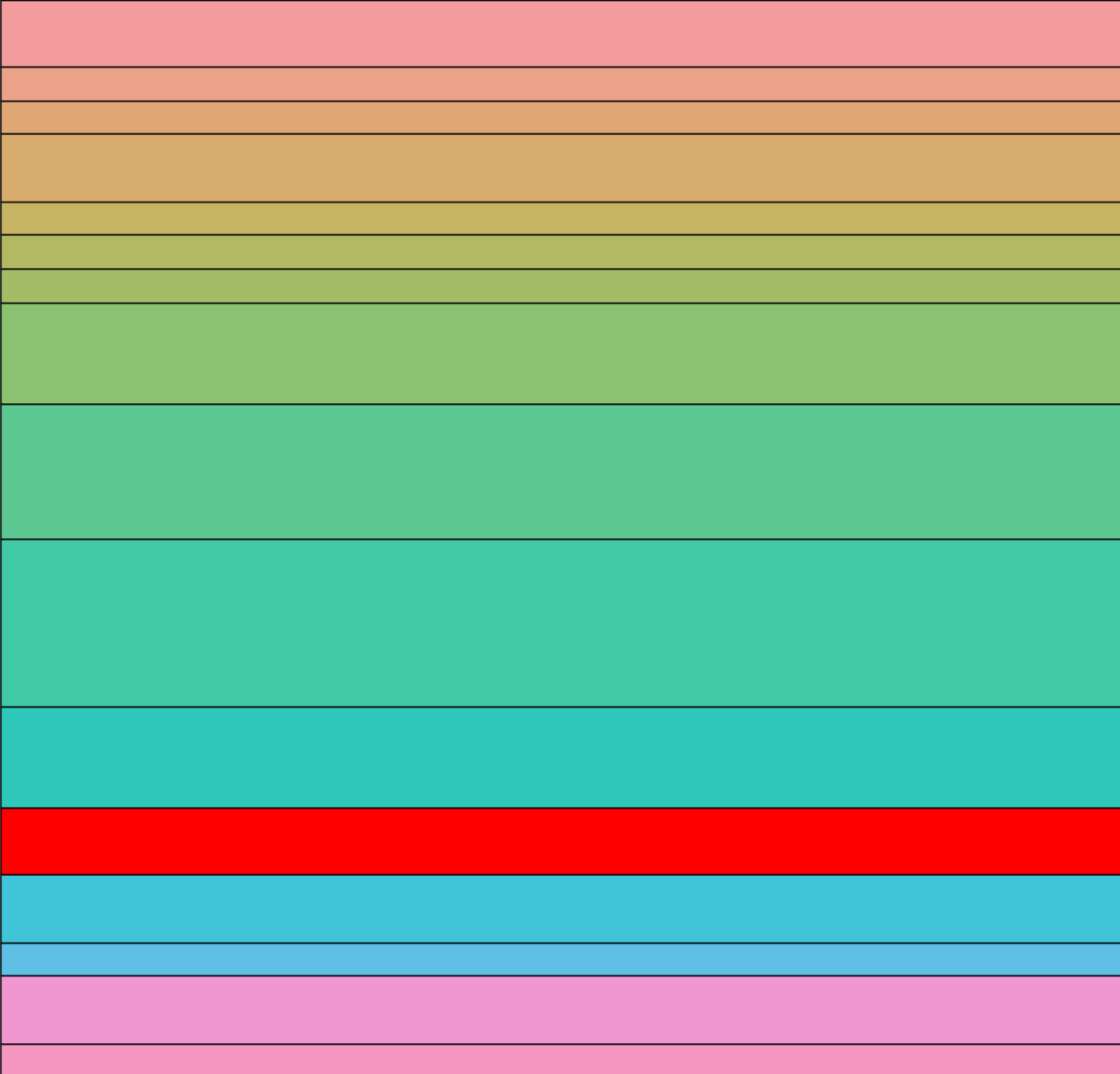Not all of us have the privilege of quitting our consulting jobs and jetting off to Italy to play chef (taken from a true story), but that doesn’t mean we can’t roll out handmade pasta in our kitchens. And if that task seems too outside the realm of possibility, there’s a package in R called “datapasta” that’s calling all of our names.
Read MoreDemand for data scientists may change in the light of new unemployment statistics estimated by the International Labour Organization; they predict that the coronavirus will engineer the loss of approximately 24.7 million jobs worldwide (cnbc.com). However, such uncertainty has yet to stifle the enthusiasm of those curious to learn about the newest data science tools, which inspired my #DataEveryone chat last week about navigating the industry’s job market.
Read MoreWhen I first started learning to code, one of the hardest aspects was figuring out how to apply the syntax I was learning to real world problems. For example, understanding the uses of JavaScript was pretty much impossible for me until I downloaded Sublime Text, created an html file within it, and could thereby see the code I'd written live in my Chrome browser. Unfortunately, my journey with JavaScript stopped there. But, I have higher hopes for my understanding of Python.
Read MoreA lot of us are spending a lot more time at home than usual. The fact that I’m even considering replacing my habit of working on my phone from bed with formally sitting at a desk I might order is proof of that. If experimenting with new packages in R is not in the cards for you during this time, that’s totally understandable. But if it is, I have a tutorial for you - one inspired by our additional nesting hours.
Read MoreThe debate over styles of learning extends far past industry versus entrepreneurship. The budding data scientists I consult on the best ways to break into the field often ask me whether it’s better to learn a bunch of programming languages or zero in on one. Should we specialize or is it better to be a jack of all trades? My answer is always the same: there are roles fitted to either style of mastery and whichever fits your personality best is the one you should adopt.
Read MoreThose of you who are or are close to a small business owner have been hearing the terms “SBA Loan” and “Payment Protection Program”floating amorphously in the atmosphere for at least a week now. Maybe you’ve figured it all out. But if you haven’t, I can point you straight to the details below for everything you need to know. Furthermore, I hope that my own decision process and the resources I’ve since accumulated prove helpful.
Read MoreOn Saturday night, I took a metaphorical trip to Seattle to view the projections carefully drawn out by the University of Washington’s Institute for Health Metrics and Evaluation. Now of course, said projections are circulating all around the Twitterverse. At that time, I’d only heard about the site from my mom, an expert in cybersecurity.
What this site offers is the ability to see each U.S. state’s projections for daily deaths and hospital resource usage. As a country at large, we are nine days away from peak resource usage and ten days away from the peak of daily deaths. This, of course, is an average flanked on either side by states ahead of their peaks and states with weeks left to go.
Read MoreWith all this emphasis placed on time, it’s no surprise that time can very significant when used as a data point. I discovered this recently when playing with some user data that my buddy, who has run a home cleaning app for two years, sent me to process. I wanted to discover any patterns that might be lurking in the amount of time between a potential customer’s downloading of the app and their last usage of it.
The data set has one column detailing the user’s download date and another containing last usage of the app. I used a simple but effective command as follows to calculate the difference in days between these two columns and insert it as another variable within the data set:
Read MoreI walk the line in many ways. Being biracial and bisexual, I suppose it’s in my nature.
I’ve learned that there’s a thin line between happy and sad, okay and not. And because of that, I find the edge is the safest place to be. If you’re comfortable living on the edge, there’s no need to ever fall over it. The strange but rewarding compromise between reckless and responsible is what keeps me somewhat sane. And what is balance, other than the average of two extremes?
Read MoreLately, at my weekly Twitter chat #DataEveryone, I’ve been having the guests ask the questions. Last week’s prompt urged them to show up with the one question on their minds throughout the first week of “social distancing”, which has now been more accurately labeled as “physical distancing.”
We received feedback on our own questions while simultaneously answering those of others. It was a true meeting of minds and a much needed solace at the onset of this dark time.
Read MoreWhat you see above is the word cloud created from the top 2000 tweets including the hashtag #transparency. The size of the word represents its popularity.
As to be expected, “coronavirus”, “Trump” and “stocks” are high on the list. But I found my eyes drawn to the messages hidden in the smaller letters. I list the three that hit me the most below. Of course, I’m happy that data made the list, but I decided not to state the obvious. What does transparency mean to you?
Read MoreWe’ve been thrust quickly into an online work system. And though some of us were already transitioning into this space, to many of us it’s still foreign. The adjustment may be stressful - even traumatic. But it doesn’t have to be.
I have 10 years of experience working in the online domain - first as a finance professional, then as a startup founder, then as a freelance content writer and community manager. Any industry can be operated successfully online.
Read MoreThose of you who know me well know that I can consistently be found on Twitter, taking in the latest developments in AI, meeting fellow data science enthusiasts and/or hosting the #DataEveryone chat on Thursdays at 7pm ET. However, RStudio is just as much of a regular hang for yours truly. There’s never a shortage of new packages to try - the most eventful of which lately, has been rtweet.
Read More#DataFemme has 9 episodes under its belt with a 10th soon to come. And I thought it was a good time to gather some data on what exactly makes a podcast bingeable. As an avid listener to true crime and my latest obsession “3 Gossip Girls” by ItTakes3, I have my own ideas of what has me queuing like there’s no tomorrow. But I decided to ask the #DataEveryone community, 40 of whose responses helped me form the list of bingeability I’m sharing with you now.
Read MoreTonight, I engaged the #DataEveryone community in a discussion about AutoML, a word that has become increasingly associated with change and the fear of it. Will it take our jobs? Will robots learn to think on their own? Are we already obsolete and don’t even know it? Well here’s what I do have to tell you:
There are still many aspects of machine learning that data scientists in the thick of it still feel are meant for humans, whether it’s something as bottom line as correlations and causality or as advanced as feature engineering.
Read MoreThe stereotype of the lone data scientist sitting behind a computer in the dark may have some truth to it. But lately, initiatives like Tableau’s #MakeoverMonday and RStudio’s #TidyTuesday have created a consistent culture around the importance of sharing our work with one another - both for feedback and validation. That’s why we at Dikayo Data have made it our mission through #DataReveal to compile the best of the data community’s projects monthly on our site, centered around a theme. This week’s is e-commerce.
Read MoreWhile moseying around the tech space, one of the first terms you will hear is “open source.” At tech conferences for example, experts will cite “open source” as a driver for innovation. Why? Because anyone can combine open source data sets on topics they so choose with open source software platforms to address problems in our society or develop the next best tool.
Inspired by open source community projects like Tableau’s #MakeoverMonday and RStudio’s #TidyTuesday, I decided to survey the #DataEveryone community during one of our weekly Twitter chats about their favorite open source platforms and why they use open source in general.
Read MoreOn Thursday, our #DataEveryone Twitter chat was focused on something we all love: books! Our industry chat brings together some of the brightest experts in data science, who contributed their best reading recommendations that will boost you towards your end-of-2019 project goals. With each title, I will put the Twitter handle of the data scientist who suggested it so that if you want to interact or as questions about the title you can. Happy Reading!
Read MoreIt’s our first #DataReveal and I’m so excited for everyone to see the talent of the #DataEveryone community. Take a look and follow these people to see more of their work.
Read MoreWe’re all told when building a new relationship that “Transparency is Key.” And of course, when compiling new data, this also applies. But in an age of oversharing, the things we choose not to share are as defining as the things we do - and omitting certain elements from your data’s story doesn’t necessarily yield a negative outcome.
I’m here to tell you a few reasons why narrowing in on a specific set of elements within a larger context can produce conclusions with your data that are complete in and of themselves. More importantly, I’m here to provide you with the main steps that will help you determine how to choose the right focus for your project.
Read More



















